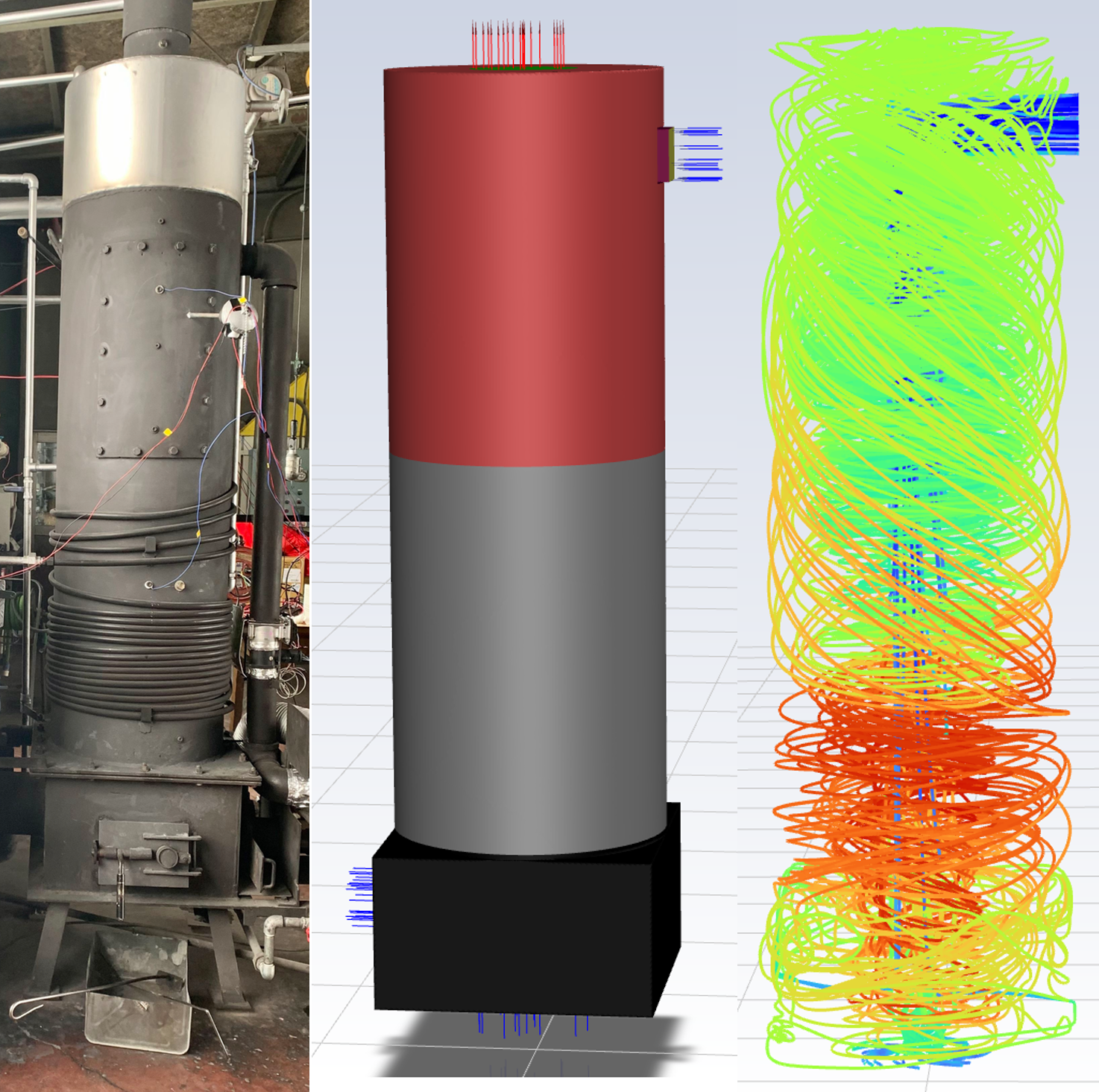Hypersonic Shock Tube

Currently, there are very few experimental devices that simulate the hypersonic shock waves generated during atmospheric entry, and their production years are old, so there are concerns about their decreasing accuracy. Therefore, the purpose of this study is to fabricate a free-piston shock tube for experiments on hypersonic shock waves with Mach numbers of 10 to 20 and to verify its performance. Furthermore, using the demonstrated experimental apparatus, we plan to proceed with research to test the generation of supersonic shock waves and the luminous characteristics of the emission due to the radiation behind them. As a result, we will be able to present the problems and complements of the experimental method, experimental apparatus, and numerical analysis for future hypersonic shock wave related experiments.
Incinerator Modeling

The elimination of air pollution is critical for the health of both people and the planet. Achieving such a goal requires the reduction of toxic emissions, specifically carbon monoxide, nitrogen oxides, sulfur dioxide, and particulate matter. Diminishment of toxic compounds is attainable on the local scale through the proper engineering of combustion systems. For instance, incinerators can be optimized to achieve complete combustion, or the complete breakdown of fuel into carbon dioxide and water, through proper control of temperatures and fuel mixing.
As a step toward improving combustion systems on the local scale, our laboratory utilizes Ansys Fluent, a versatile CFD software, to simulate the combustion in a Hokkaido workshop’s incinerator. Through visualization and analysis, we can determine local temperatures and species concentrations in the incinerator. We test various inlet boundary conditions, such as initial amount of air to mix, to calculate optimal incinerator temperatures that minimize the amount of toxic compounds in the hot gas exhaust.

